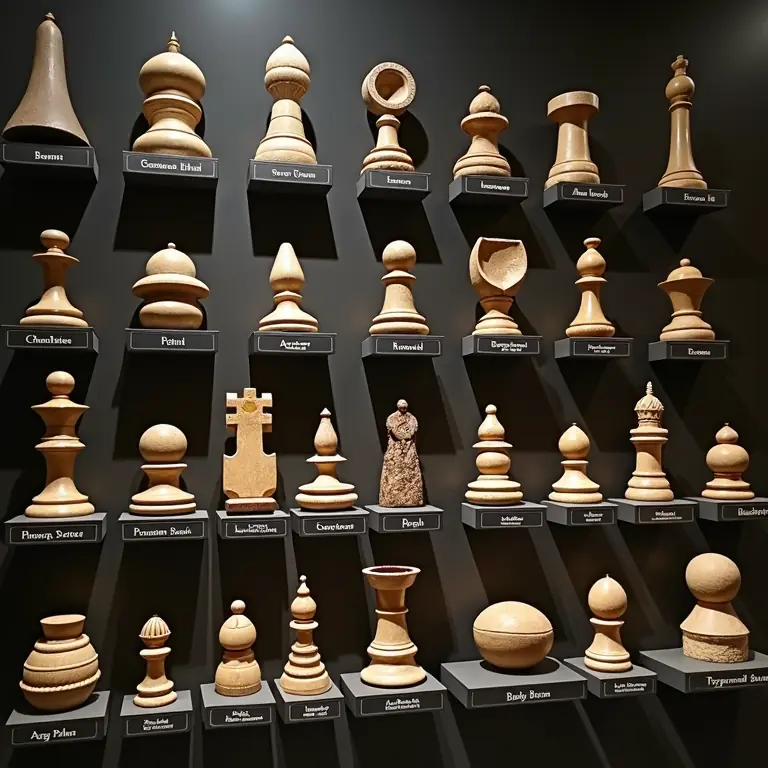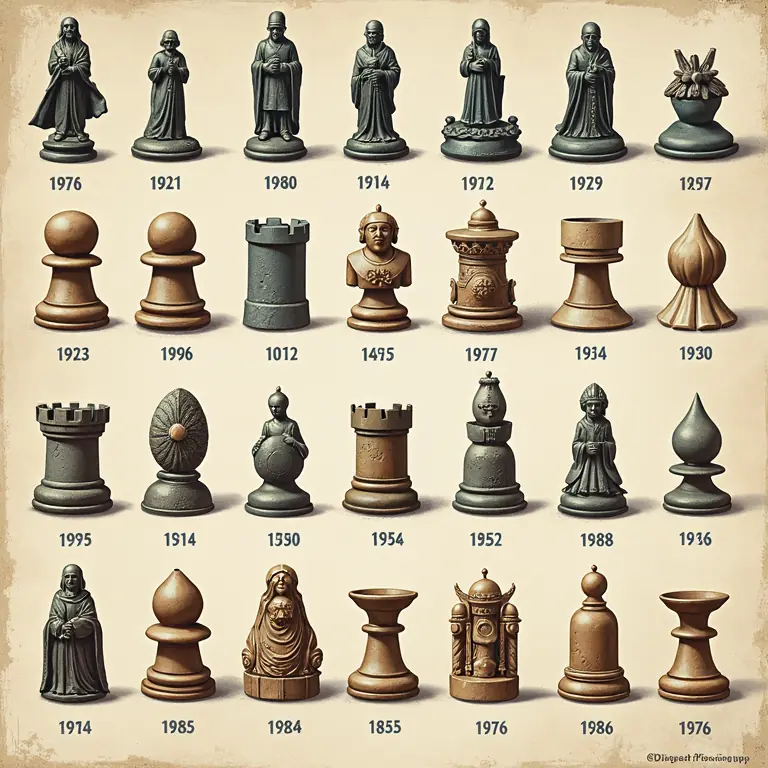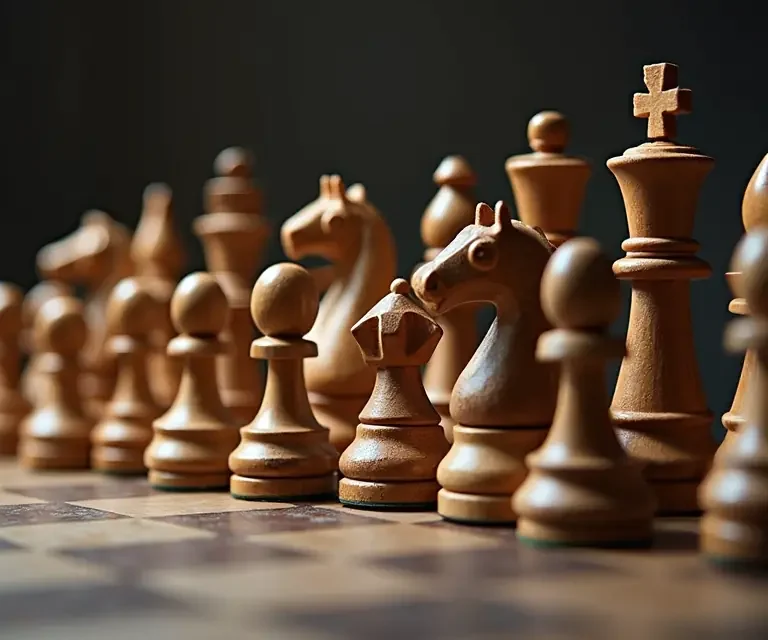Board games. They’ve been a cornerstone of human entertainment for millennia, offering a space for strategic thinking, social interaction, and good old-fashioned fun. But beyond the rules and the gameplay, lies a fascinating, often overlooked aspect: the pieces themselves. From humble beginnings as readily available objects to the intricately designed miniatures we see today, the evolution of board game pieces tells a story not just of play, but of materials, artistry, and changing cultural values. This article will delve into that history, exploring how these playful figures have consistently evolved, reflecting the world around them.
Ancient Origins: Tokens of the Realm
The earliest board games, dating back to around 3000 BCE in Mesopotamia and Egypt, didn’t boast the elaborate pieces we’re accustomed to. Games like the Royal Game of Ur and Senet utilized simple tokens – pebbles, shells, bones, or even dried beans. These weren’t designed as representations of anything specific; they were simply markers to denote a player’s position on the board. The focus was purely on the mechanics of the game itself. Archaeological finds reveal that these tokens were often made from locally sourced materials, reflecting the resources available in the region. The aesthetic value, if any, was secondary to functionality. In ancient Egypt, Senet pieces have been found crafted from ivory, alabaster, and faience, suggesting some level of craftsmanship even in these early examples, possibly reserved for the elite.
Moving into ancient Greece and Rome, we see the emergence of games like Ludus Latrunculorum (the Romans’ game of latrunculi, often compared to chess) and Petteia. These games still largely employed simple counters, but we begin to see a slight shift towards more defined forms. Pieces might be differentiated by color or size, hinting at a developing need for clearer player identification. The materials remained largely consistent – stone, glass, or bone were common.
The Medieval Period: Pawns and Pieces with Purpose
The medieval period saw the rise of chess, a game that profoundly influenced the development of board game pieces. Originating in India as Chaturanga, chess spread through Persia and eventually into Europe. With it came a need for pieces that not only marked position but also represented roles within the game’s narrative of warfare. Early chess pieces were often abstract and symbolic. The pieces didn’t immediately resemble the figures we know today. Instead, they were often cylindrical or conical, differentiated by their size and the inscriptions carved upon them.
However, over time, the pieces began to take on more recognizable forms. The king and queen, the most important pieces, were often the most elaborately decorated. Pawns, representing the foot soldiers, remained relatively simple. Materials evolved to include wood, which was more readily available and easier to carve. The craftsmanship during this period varied greatly depending on the social status of the owner. Royalty and nobility commissioned exquisitely carved pieces from ivory, walrus tusk, or even precious metals, while commoners used simpler wooden or bone pieces. The standardization of piece design wasn’t immediate; regional variations were common, with different cultures interpreting the roles and appearances of the pieces in their own way. The evolution of chess pieces is a compelling study in how gameplay and cultural representation intertwine. You can find fascinating parallels in the way early mapmakers used symbols – see the history of map legends for a deep dive into that.
The 18th and 19th Centuries: Mass Production and Emerging Aesthetics
The 18th and 19th centuries brought significant changes in manufacturing and materials. The Industrial Revolution ushered in an era of mass production, making board games – and their pieces – more accessible to a wider audience. While hand-carved pieces remained popular among the wealthy, the rise of machinery allowed for the production of more affordable options.
Wooden pieces continued to dominate, but new materials began to emerge. Bone china, often decorated with hand-painted designs, became a popular choice for more upscale games. The aesthetic of the pieces began to reflect the prevailing artistic styles of the time – Neoclassicism, Romanticism, and Victorianism all left their mark on board game design. We see a greater emphasis on detail and realism, particularly in games designed for the upper classes. Games like backgammon, which had enjoyed continuous popularity for centuries, saw its pieces evolve from simple counters to more ornate designs featuring intricate inlays and carvings. The standardization of game rules also contributed to a gradual standardization of piece design, although regional variations persisted.

The 20th Century: The Plastic Revolution and Miniature Mania
The 20th century marked a turning point in the history of board game pieces. The invention of plastic, particularly Bakelite in the early 1900s and later thermoplastics like polystyrene and polypropylene, revolutionized the industry. Plastic was inexpensive, durable, and could be molded into virtually any shape. This opened up a world of possibilities for board game designers.
Monopoly, released in 1935, became a prime example of the power of plastic. The iconic metal tokens – the Scottie dog, the battleship, the thimble – became instantly recognizable symbols of the game. However, plastic quickly replaced metal as the dominant material. The mid-20th century saw an explosion in the popularity of board games, fueled by post-war prosperity and increased leisure time. Games like Clue, Risk, and Scrabble all utilized plastic pieces, often molded into representational shapes – miniature weapons, armies, or letters.
The latter half of the 20th century also witnessed the rise of wargaming, a genre that demanded highly detailed and realistic miniatures. Companies like Games Workshop, founded in 1975, pioneered the production of plastic miniatures for games like Warhammer 40,000 and Dungeons & Dragons. These miniatures weren’t just pieces; they were works of art, painstakingly sculpted and painted to represent individual soldiers, monsters, and heroes. This trend towards miniature mania continues to this day, with an enormous market for collectible and customizable miniatures. The level of detail and realism achieved in modern miniatures is truly astounding. Consider the evolution of video game character models – here’s a fascinating look at One Piece PlayStation Evolution PS1 – PS5.
The 21st Century: Innovation and Customization
The 21st century has seen a continued emphasis on innovation and customization in board game piece design. 3D printing has emerged as a powerful tool for creating bespoke pieces, allowing designers and players to create unique and personalized gaming experiences. We’re also seeing a resurgence of interest in wooden pieces, particularly those made from sustainable materials. The demand for eco-friendly products has driven a trend towards more environmentally conscious manufacturing processes.
Games like Settlers of Catan utilize wooden resources – wood, brick, wheat, ore, and sheep – as central components of the gameplay. The tactile feel of these wooden pieces adds to the immersive experience. Similarly, games like Pandemic employ distinctive plastic pieces representing disease cubes and research stations, visually reinforcing the game’s theme. The use of color psychology in piece design is also becoming increasingly sophisticated. Colors are carefully chosen to evoke specific emotions and associations, enhancing the overall gaming experience. The modern board game industry is incredibly diverse, catering to a wide range of tastes and preferences. From abstract strategy games to immersive narrative experiences, the pieces are designed to complement the gameplay and enhance the thematic elements. The principles of visual perception come into play here, as designers leverage how our brains interpret shapes and colors – explore the science of optical illusions to understand how these effects work.
Materials and Manufacturing: A Closer Look
Throughout history, the materials used to create board game pieces have been dictated by availability, cost, and technological advancements. From the simple pebbles and shells of ancient games to the sophisticated plastic miniatures of today, the choice of materials has profoundly influenced the design and functionality of these playful figures.

Wood: Remains a popular choice, particularly for games emphasizing natural elements or tactile experiences. Different types of wood – beech, birch, maple – offer varying degrees of hardness, grain, and color. Wood can be easily carved, painted, and stained, making it a versatile material.
Plastic: The dominant material of the 20th and 21st centuries. Various types of plastic – polystyrene, polypropylene, ABS – offer different properties in terms of durability, flexibility, and cost. Plastic can be molded into complex shapes with remarkable precision.
Metal: Historically used for high-end pieces, metal offers a sense of weight and prestige. Brass, pewter, and zinc alloys were commonly used in the past. Today, metal miniatures are often used for collectible figures.
Bone and Ivory: Used in ancient and medieval times, these materials are now largely avoided due to ethical concerns and legal restrictions. They offer a smooth, polished surface and a luxurious appearance.
Ceramics: Bone china and porcelain were used for more upscale games in the 18th and 19th centuries. These materials are fragile but offer a delicate aesthetic.
Manufacturing processes have also evolved significantly. Early pieces were handcrafted by skilled artisans. Today, mass production techniques – injection molding, die-casting, 3D printing – are used to create millions of pieces each year. However, handcrafted pieces remain popular among collectors and enthusiasts.
The Future of Board Game Pieces
What does the future hold for board game pieces? Several trends are likely to shape their evolution. We can expect to see greater emphasis on sustainability, with a move towards more eco-friendly materials and manufacturing processes. 3D printing will continue to democratize the design process, allowing players to create customized pieces tailored to their individual preferences. Augmented reality (AR) and virtual reality (VR) technologies may also play a role, blurring the lines between the physical and digital worlds. Imagine a board game where the pieces come to life on your tabletop through the power of AR! The integration of smart technology – pieces equipped with sensors and microchips – could also add new layers of interactivity to the gaming experience. The consistent drive for more immersive and engaging gameplay will undoubtedly fuel further innovation in board game piece design. Just as the standardization of fabric measurements took time and effort – as seen in the history of weights and measures – we may see more standardization in piece sizes and shapes for compatibility across games.
The evolution of board game pieces is a testament to human ingenuity and our enduring love of play. From humble beginnings as simple tokens to the intricately designed miniatures of today, these playful figures have consistently reflected the world around us – our materials, our artistry, and our changing cultural values. The story of board game pieces is a story of history, technology, and the enduring power of imagination. The patterns found within traditional crafts often reflect deeper cultural meanings – similar to the stories woven into traditional quilting, board game pieces often carry symbolic weight.


 The Surprisingly Consistent Science of Vintage Board Game Packaging – Art, Marketing & Cultural Reflection
The Surprisingly Consistent Science of Vintage Board Game Packaging – Art, Marketing & Cultural Reflection  The Curious Evolution of Board Games: From Senet to Settlers
The Curious Evolution of Board Games: From Senet to Settlers